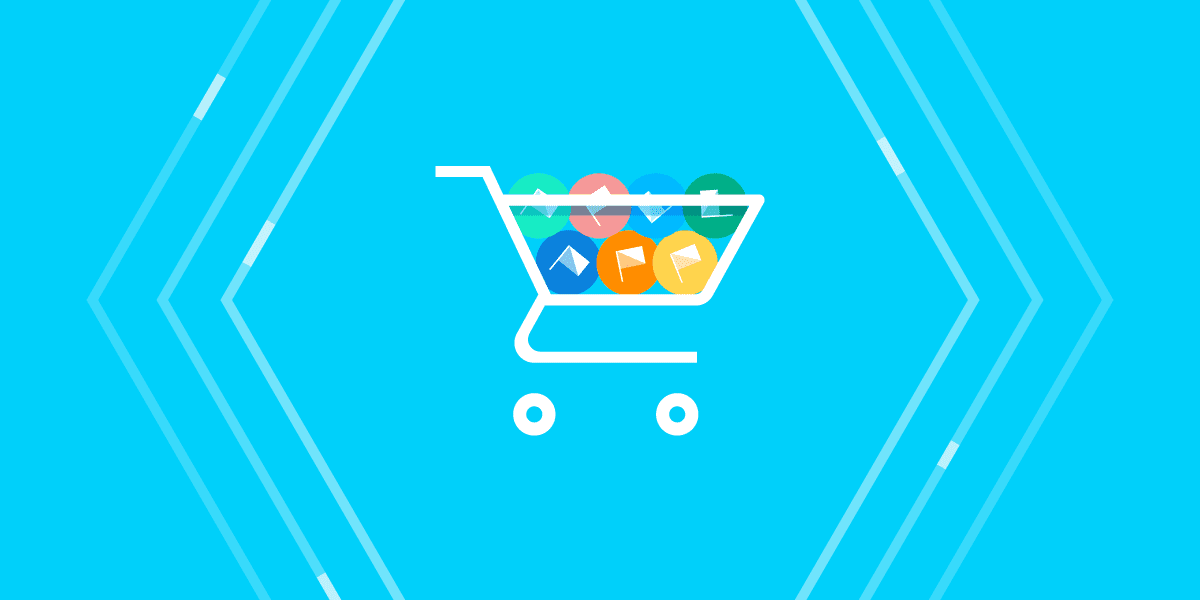Whether you are selling your own products or creating a platform for others to list their goods and services, an online shop is now a primary channel for global consumers. The items you sell have already gone through significant refinement and labor to come to market, and your team must pay the same care and attention to the purchasing experience. That means you need to be able to release features safely AND understand how those changes impact your business and drive customer behavior. In the world of e-commerce, these are the critical metrics you must be tracking and measuring for business success.
1. Total Revenue
Revenue is at the heart of any e-commerce business, and every code change has a goal of improving this metric. Whether it is adding new items to the store, streamlining the user experience, or even fixing a bug — an improved product will result in more returning users and a greater conversion rate.
2. Purchase Count and Average Order Value
Total revenue is the primary driver of business success, but the number of purchases and the amount of revenue per purchase together yield that total revenue value when multiplied. Measuring each of these e-commerce metrics provides additional insight into a feature’s impact. They may change together, move in opposite directions, or one may not change at all. Each case offers insight into customer behavior and how future changes may perform. For instance, a sale will reduce the revenue per purchase to increase their frequency and achieve higher total revenue; tracking all three metrics will help the team find the optimal discount for your products.
3. Return Rate
While it may be sufficient for a customer to come to your site for a specific item and never return, a business that can nurture repeat customers will dramatically increase lifetime value and reduce overall customer acquisition costs. Measuring your customers’ return rate helps ensure that every change to the product drives repeat business and allows you to discover new expansion opportunities.
4. Sales by Product Category
Filtering sales by product category allows your team to track the performance of each and know what resonates with your customer the most. When you can pinpoint the product types that drive significantly better results, you can provide better solutions and more targeted inventory.
5. Conversion Funnel: Searches, Product Page Views, Cart Completion Rate, Checkout
There are many steps a customer needs to take before finally converting into a purchase. They must find a product, determine if it is suitable for them, add it to their cart, complete the checkout flow, and any other stages specific to your particular site. Understanding how many customers move from one step to the next is critical to identify bottlenecks in the product experience. A slight improvement at the top of the funnel can yield massive dividends for your business, and any issue causing a drop off at the end of the process means you are losing your highest intent customers.
6. Exceptions
Nothing harms a customer’s experience more than a buggy site. While one always hopes that testing will catch such issues, monitoring your feature releases allows you to detect and notify teams of problems before they spread. Tying this measurement to the features themselves, rather than needing to watch the giant dashboards, allows faster detection and automatically diagnoses the root cause when an issue is detected so development teams can simply disable the flag while working on a fix.
7. Frustration Rate
Bugs aren’t the only source of frustration. Unclear calls to action, broken links, or long load times can have customers wondering if the site is working correctly. While you might not be able to hear the user yelling at their screen, a typical behavior is Rage Clicks, and by looking for their occurrence, your team can identify and fix issues with features early.
You Don’t Know What You Don’t Know
Every e-commerce site can provide a seamless user experience. When you measure these critical e-commerce metrics in Split, you learn about the customer journey and understand how your product influences that behavior. By tying all measurements to features themselves, you can quickly find and resolve business issues, bugs, or frustration points in production before they spread.
Here at Split, we know that data-driven decision-making is essential to running a successful business. By measuring these seven e-commerce metrics, you can ensure your users have the best possible experience and increase your revenue. Ready to learn more? Check these posts out:
- How to leverage feature flag data for product analytics in Amplitude
- 4 Signs Experimentation Should be Your Top Priority
- A Simple Guide to A/B Testing
We’d love to have you follow along as we share new stories. Check us out on YouTube, Twitter, and LinkedIn!
Get Split Certified
Split Arcade includes product explainer videos, clickable product tutorials, manipulatable code examples, and interactive challenges.
Switch It On With Split
Split gives product development teams the confidence to release features that matter faster. It’s the only feature management and experimentation solution that automatically attributes data-driven insight to every feature that’s released—all while enabling astoundingly easy deployment, profound risk reduction, and better visibility across teams. Split offers more than a platform: It offers partnership. By sticking with customers every step of the way, Split illuminates the path toward continuous improvement and timely innovation. Switch on a trial account, schedule a demo, or contact us for further questions.
